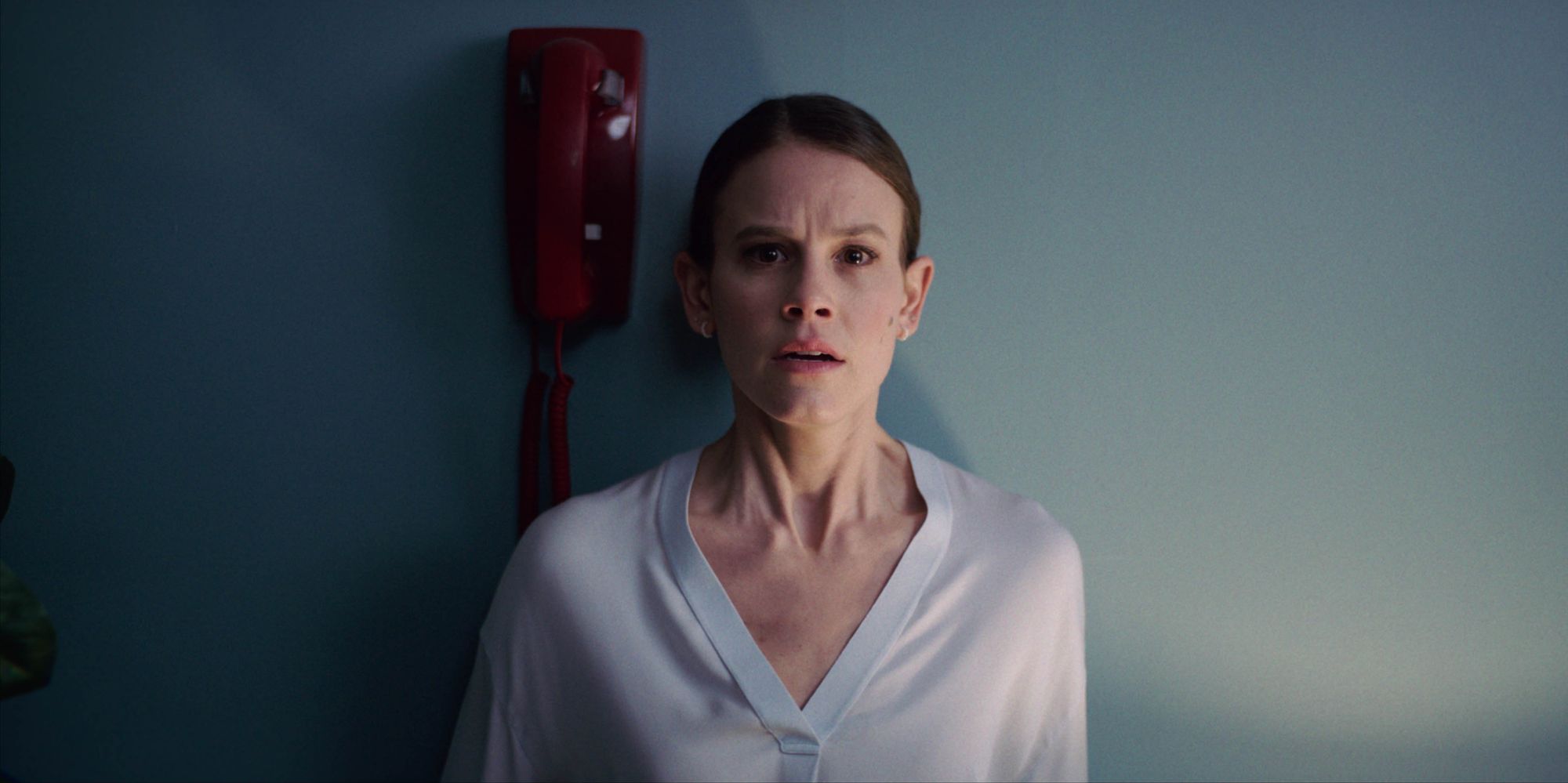Smile (2022): A Movie Review
An entertaining and surprisingly deep-cutting debut from Parker Finn.

Writer/director Parker Finn’s debut feature is a curse/demonic possession movie (in that order, with possession playing a subservient role in the narrative) with primary themes of mental health, trauma, and the cycle of abuse.
The plot concerns Rose Cotter (played by Sosie Bacon), a cynical-minded psychiatrist who treats a new patient one day. That patient is a clearly intelligent but distraught PHD student, initially with no signs of psychosis, who attempts to frantically explain her recent experiences of seeing an evil entity who takes various human forms, and has told her she is going to die today.
The training of Rose has conditioned her to see things through a purely psychological lens, but events transpire that throw that world-view askew, and go from there.
— An offset: that “smile,” in the real world is the kind of smile you only see from someone who is on the Dark Triad spectrum, when they feel empowered and in a position of domination, feeling charged, like they can prey freely, and are gloating in predation. I felt that I needed to mention that. It might help someone. And if you need help from that, there are people who will help. Seek them out. —
Rose finds herself in the position of defending her sanity in a similar way to the PHD student she met, fighting for a cynical society to take her experiences at face value. We follow the story from there, in a scary journey through a culture that has both a materialistic and “eyes wide shut” attitude, seemingly without shelter — even when it comes to family, or those who seemed liked loved-ones.
Narratively it is a crackling with real and true energy, and has great depth. It keeps things on the surface, though. Straight horror. It entertains.
A hostile society you want to take apart, possibly by cat nail strikes. The script helps in this regard, by under-explaining events in a way that makes you want to jump out your seat as a viewer and tell the full story in detail. This was the first movie of recent memory where I realised very clearly this is an effective filmmaking technique, and not a flaw in the script.
On these levels, the story is psychologically horrifying. Technically, it has some real scares, too.
It is a proudly formulaic horror movie, that wants to scare and entertain its audience, and make good use of the staples of its genre. These things, it does well.
If you are a horror fan, it is one to go see. In the cinema. A darkened auditorium, safe in the company of others. Popcorn ready to fly.
The third act goes a bit astray, breaking what felt like its distinctive style to that point, and dropping in pace in a few places. It became a little too formulaic. But, them’s the breaks when you walk the tightrope of doing a straight-up, formulaic horror movie with those goals. It got to where it wanted to get to.
I did not leave the theatre disappointed.
The image really impressed me, because for horror movies appealing to a wide market it is so easy to lean on the known quantity when it comes to cinematography.
Made a few years ago, I feel sure the image would have a very digital look, and be drowned in way, way too much “orange and teal” (don’t get me started on that horribly distracting, abhorrent look) (and, edited together with mindless fast cuts whenever possible).
Here, the image is authentic, pleasing, and distinctive — but not artsy. It does make a few technical mistakes (distracting overexposure) that spoil a few very brief shots I thought had awesome visual potential. But, when almost every frame in the film is really damn good, the only thought about such momentary flaws should be “who cares?”
The colour palette is exceptionally fitting, using (perfectly-chosen) pastel tones throughout many shots that might be used in a hospital to calm patients, and the movie gets these tones dead on.
A nice image pulls you along in the movie’s flow in a way that visually rewards your brain in an extra way, while sat in the movie theatre for two hours plus (or in this case, a snappy 115 minutes).
In short, I really appreciated the cinematography from Charlie Sarroff, who has relatively few features to his name, and I’m glad cinematographers like him are getting to work on films with wide releases. It makes a big difference, in seeing a nice new visual style in the cinema, and I really look forward to seeing more of his work.
The performance of Sosie Bacon is incredible, and anchors the film. She renders the plight of trying to make your case heard when there are extreme elements involved, and the difficulty in finding true help in such scenarios (as they all seem to fall away). Her initial impression as a psychiatrist who comes from the opposite end of the spectrum are done brilliantly, and give the whole movie a contrast and emotional weight it wouldn’t have otherwise, if not performed as well.
This movie reminds me of the Roger Ebert quote:
“Cinema is an empathy-generating machine.”
God-damn right, it applies to this one. Though it scares and entertains primarily, the heart of gold is there in full effect, and you can feel it in the theatre.
There is a lot to love about this movie. And you will be scared.
Go see it, and absorb the wonders of entertaining horror.
James Lanternman writes movie reviews, essays, and moonlit thoughts. You can reach him at [email protected].
Previously… Crimes of the Future: A Movie Review
